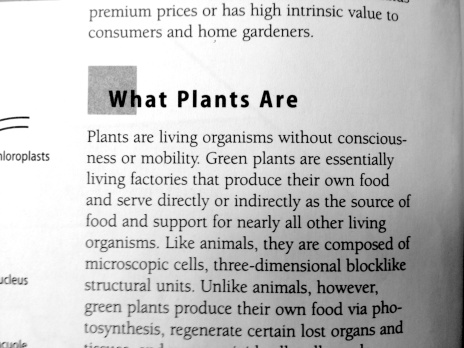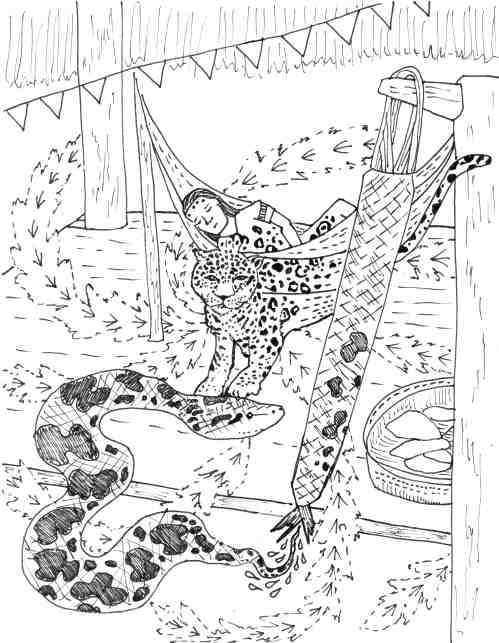In our introduction to horticulture class we use a textbook called the California Master Gardener Handbook, published as part of the California Master Gardener Program. The California Master Gardener Program is run by the University of California, and shares information about home gardening with the general public. In the first pages of the book is this brief description of plants:
A view of plants as energy output machines has enabled us to to apply efficient methods of cultivation, and to produce enormous amounts of plant products. Foods, drugs, fibers, and building materials. Boxes of oranges, bags of rice and potatoes, piles of folded cotton, and stacks of 2 x 4’s.
On the other hand, Amazonian Indians – horticulturists, hunters, and caretakers of the forest – articulate the perspective that plants are beings, or the abode of spirits. In some cases, the plants are actually teachers of humans. The plants teach kinship, symbiosis, humility, and inner metamorphosis.
The time I have spent in the rainforest is minimal. Nevertheless, I am amazed by the diversity in the jungle, and bewildered by the primeval plant knowledge that enabled human survival for many thousands of years. Stories passed down by Indian tribes to explorers and writers embody a universe and relationship with nature very distinct from our own.
Inspired by the Secoya peoples, permeated by the writings and old photographs of G. Reichel-Dolmatoff, R.E. Schultes, and W. Vickers, I started to draw some of the stories related to plant lore:
This is the sun father carving petroglyphs with flowers and light on rocks by the waterfalls. The nuclear reaction that powers our world – the SUN!
Here are the first settlers of the Amazon basin from the Tukanoan tribes. They came to the jungle from either the highlands to the west, or from the stars of the milky way. A cosmic anaconda pulled their canoe. Inside the canoe were three sacred plants. Manioc is first; it is the starch and staple of all meals. I met Manioc as a tasty flat bread and as a plant in an actively cultivated garden plot. The second plant was Coca, the source of coca leaf. Coca leaf is a ritual food that provides protein and vitamins. It staves off hunger and thirst, so that one could work a little bit longer in the forest clearing. The third plant is Yage, the vine of the soul. This plant enables the Indians to travel to mythic time, and make contact with the spirits of the forest.
One of the epic Indian dreams sees the river as a person. The head is the headwaters, and the feet go to the sea. When the person shakes their flowing hair, leaves of the yage plant scatter into the river and become fish.
An important medicinal plant is Kana, Sabicea amazonensis. It belongs to the Rubiaceae, the plant family whose members also include coffee and quinine. The commonly used landscape shrub in the subtropics Ixora is in this family, as is the fragrant Gardenia of florists. Small red fruits of Sabicea are eaten and drunk. This plant symbolizes the linking and twining of humanity. Fruits are hearts are people; vines are string are umbilical cords are rivers are time. We are all children of the sun.
One of the most important plants to any society is the plant with caffeine. No caffeine, no work! Amazonians are partial to Yoco as well as Guayusa tea. Since I was drawing hollies with caffeine content I went ahead and included mate from Argentina (Ilex paraguariensis), Ilex vomitoria from the southwestern United States used as a purge, and the bitter nail tea holly from Taiwan and China. Oops, forgot Guarana! A Yoco relative of the rainforest. The elfin dudes running at a fast clip have just had their morning brew, their heads are the fruits of Yoco.
There is this idea of transformation in the jungle. Of people and basketry turning into animals, plants, and rocks. The boundaries are not strict. Consciousness permeates from every substance in this universe. The whole thing is alive and reflective…!








